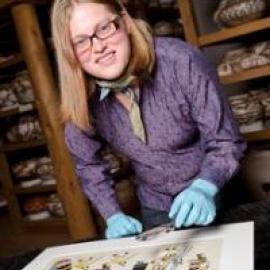By Gloria Bell
Attending In the Balance: Indigeneity, Performance, Globalization held at Royal Holloway, University of London, from Oct 24-27, was a great opportunity to learn, reflect and challenge my current thinking about indigenous arts and culture in Canada and internationally.
The conference was funded by the European Research Council project, Indigeneity in the Contemporary World, and led by Professor Helen Gilbert at the University of London. The event set out to examine the power and precariousness of indigeneity as a politicized cultural force in our unevenly connected world, with an explicit focus on performance arts.
To what extent did this conference offer a balance of indigeneity, performance and globalization? This is a question that I will reflect on in this brief review. As a Métis emerging scholar and artist, I am searching for a balance and I think it lies in praxis, the embodied practice of research, writing, engaging and being, and the importance of grounding research methodologies within indigenous frameworks.
The conference opened with a keynote by Tracy Devine Guzmán, Associate Professor of Latin American Studies, Portuguese, and Spanish, and Director of Graduate Studies at the University of Miami, discussing the current state of emergency for indigenous peoples to fight for their territories in Brazil and the blurring of indigenous peoples into the national imaginary. Guzmán described the efforts of indigenous activists including Tuira Kayapó and Elaine Potigura to raise awareness of indigenous rights via spoken protest and text. Guzmán, like many other scholars that attended the conference, has many years of experience working in solidarity with indigenous groups.
Working within the machine of higher education, Michael Greyeyes (Cree), Associate Professor in the Department of Theatre at York University, provided insights into the importance of conversation and spaces of dialogue between settler and indigenous communities and the entrenched nature of colonial education systems. Greyeyes questioned the ability of scholars working within mainstream Western education systems to effect change towards more inclusivity of indigenous perspectives in the canon. He suggested that within the fluid nature of indigenous performance, there is room for nuanced understandings and space for indigenous methodologies.
The conference was complemented by the opening of the EcoCentrix: Indigenous Arts Sustainable Acts exhibition, featuring the work of indigenous artists from around the globe. As part of the exhibition, Edgar Heap of Birds (Cheyenne and Arapaho) held an artist workshop in which participants wrote down phrases and then digitized them into his larger installation. The four word poems offered insights into the concerns of artists, scholars and indigenous peoples that attended the conference and exhibition. I think of these word poems as offerings for contemplation and action in the realm of public art. The work of the international indigenous artists featured in the exhibit highlighted the power of art to effect change within global flows of indigeneity and culture, terms that need to be continually revisited.
I was humbled, challenged and amazed throughout the conference by the research done for and by indigenous scholars and non-indigenous scholars working in solidarity. In particular, I was touched by Monique Mojica (Kuna and Rappahannock) and Brenda Farnell’s performative presentation on Mola Dulad Aibanai (Living Mola Moving). Mojica articulated her process of learning the pictographic importance of the molas and also reconnecting with her culture via this process. She shared that her process of reclaiming cultural heritage was ongoing. She said, “I had to learn to not be afraid of not knowing.”
I will keep Mojica’s words in mind as I reflect on how an attitude of humility and courage remains central in articulating cultural spaces of indigeneity, and achieving balance.
Photograph courtesy of Gloria Bell, used with permission.
Gloria Bell is an IPinCH Associate and a PhD Student in the Department of Art History, Visual Art and Theory at the University of British Columbia.






